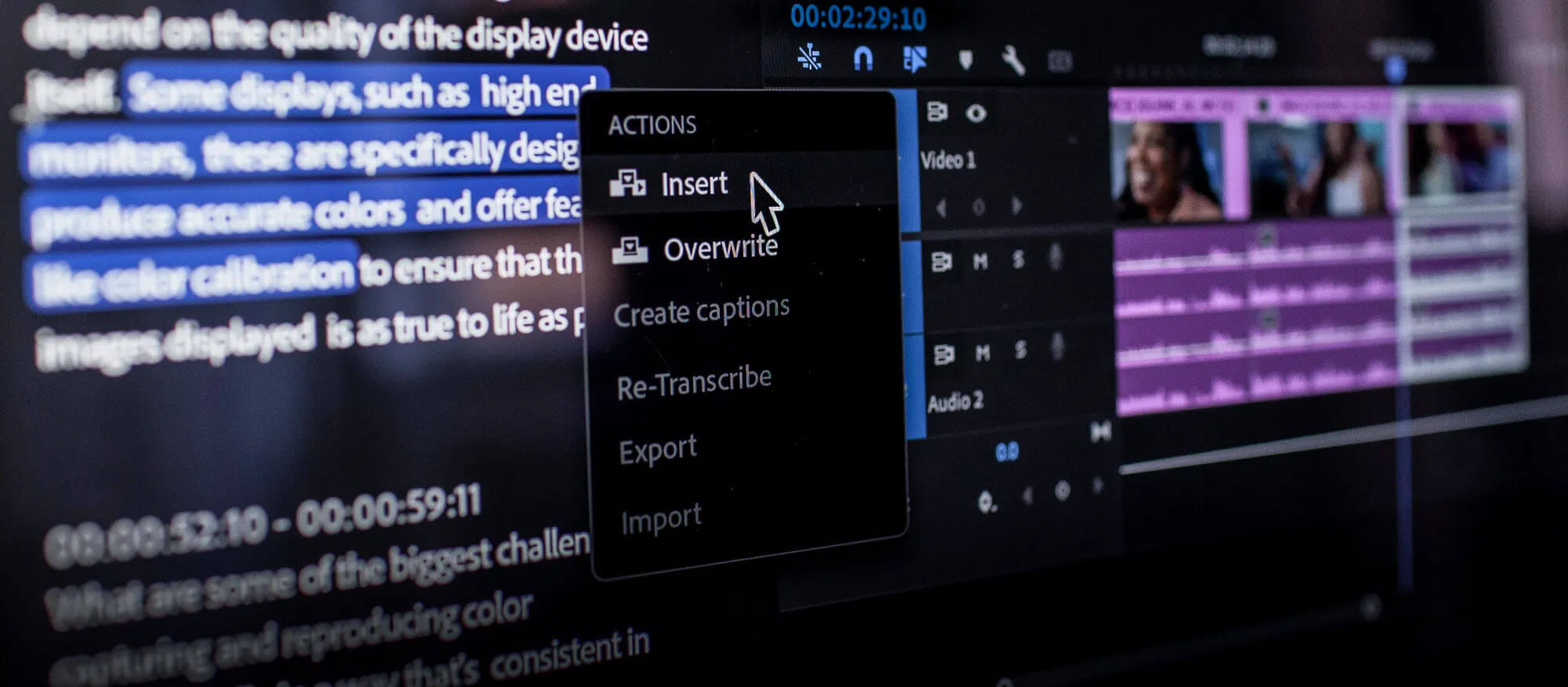

Mastering Transcript Proofreading and Editing: A Quick Guide
In the world of transcription, accuracy is paramount. Whether you’re a seasoned professional or a novice transcriber, honing your skills in proofreading and editing transcripts is essential.
In today’s guide, we’ll delve into the types of transcripts and the best ways to edit and proofread transcriptions, covering everything from basic steps to advanced techniques. By the end, you’ll have a comprehensive toolkit to polish your transcripts like a pro. But before we discuss the nuances of transcription proofreading and editing, let’s briefly go over the basics.
What Is a Transcript?
A transcript is a written or typed record of a conversation, speech, or other spoken words. It is a textual representation of the spoken content, typically organized chronologically. Transcripts are often used for various purposes, such as:
- Documentation: Transcripts can serve as a written record of spoken words, making reviewing and referencing the content easier.
- Legal Proceedings: In legal contexts, transcripts are often created for court hearings, depositions, or other legal proceedings to document the spoken statements of individuals involved.
- Media Production: Transcripts are commonly used for television shows, movies, and podcasts in the media industry. They can be utilized for subtitling, closed captioning, or as reference material for content creators.
- Education: Transcripts are sometimes created for educational purposes, such as transcribing lectures, interviews, or discussions. This can be helpful for students to review material or for accessibility purposes.
- Research: Researchers may create transcripts as part of their data collection process, especially when studying spoken language or conducting interviews.
Transcripts can be verbatim, capturing every spoken word exactly as uttered, edited for clarity and conciseness, or intelligent, involving the combination of both. The format of a transcript may vary depending on its intended use and the preferences of the person or organization creating it.
What is Transcript Editing?
Editing a transcript is the process of refining transcripts or captions for grammar, punctuation, word choice, and consistency. It includes removing unnecessary words, abbreviating lists, checking proper nouns, and ensuring the overall tone and key ideas are preserved.
What is Transcript Proofreading?
The process of proofreading transcriptions involves meticulously reviewing and correcting transcriptions for coherence. It goes beyond the basics of grammar and spelling, focusing on the nuances of language and context. A well-proofread transcript ensures that the intended message is accurately conveyed, making it an essential step in maintaining the integrity of any written record.
How to Edit Your Transcript: 5 Steps to Success
Editing of transcripts demands focus, attention to detail, and time. Rushing through the process can result in subpar transcripts, especially in fields like medicine and law. Here’s a step-by-step guide to help you hone your editing prowess:
Step 1: Preliminary Review
Before diving into the nuances of editing, conduct a preliminary review of the entire transcript. This helps identify overarching issues such as formatting errors, incomplete sentences, or inconsistencies.
Step 2: Grammar and Punctuation
Precision in grammar and punctuation is non-negotiable when it comes to editing a transcript. Pay close attention to subject-verb agreement, tense consistency, and the correct use of punctuation marks. A well-structured and grammatically sound transcript enhances readability and comprehension.
Step 3: Contextual Accuracy
Transcription is not just about the words; it’s about capturing the essence and context of the spoken words. Ensure that the transcript accurately reflects the intended meaning and context of the conversation. If there’s ambiguity, refer back to the original audio for clarification.
Step 4: Consistency in Style and Tone
Maintaining a consistent style and tone throughout the transcript is essential for a professional finish. Be mindful of the language used, especially when dealing with multiple speakers or diverse content. Consistency creates a cohesive narrative and enhances the overall quality of the transcript.
Step 5: Verifying Technical Terms and Jargon
Technical terms and jargon are commonplace in specialized fields like legal or medical transcription. Verify the accuracy of these terms to avoid misinformation. Cross-referencing with industry-specific dictionaries or glossaries can also be immensely helpful in this regard.
Now that you know how to edit a transcript, let’s find out how to elevate your proofreading game, ensuring your transcripts are error-free and polished.
Proofreading in Transcription: Advanced Techniques
Proofreading of a transcript is not a one-size-fits-all process. It requires a nuanced approach and a keen eye for detail. These advanced proofreading techniques from our best experts will help you catch the trickiest errors:
1. Read Aloud for Flow
Reading the transcript aloud can help identify awkward phrasing, redundancies, or areas where the flow could be improved. This technique is particularly effective in capturing the natural rhythm and cadence of spoken language.
2. Reverse Proofreading
In reverse proofreading, start from the last sentence of the transcript and work your way backward. This unconventional approach helps break the familiarity with the content, making it easier to spot errors that may have been overlooked in a traditional proofreading process.
3. Collaborate and Seek Help
Collaboration can be a powerful tool in proofreading your transcripts. Engage with colleagues or seek the help of a professional typing service to get fresh perspectives on the content. Having a new pair of eyes review your transcript can help uncover blind spots and contribute to a more refined final product.
Transcript Formatting Essentials
Accurate editing and proofreading are essential, but proper formatting is equally crucial for readability. Follow these tips to enhance your transcription formatting:
- Use a uniform size and font.
- Maintain consistent spacing (typically double-spacing).
- Clearly label each speaker when you edit transcript.
- Apply appropriate indentations.
- Add page numbers.
- Use correctly sized margins.
- Include timestamps when necessary.
Last but not least, stick with industry best practices for headers and special formatting, and you’re halfway to perfection!
Save Money and Time With Human Transcription Editing and Proofreading
If editing and proofreading of transcripts seems like a daunting task, professional human transcription services can be your ideal solution. Such services can not only capture audio accurately but also edit, proofread, and format transcripts for clarity and professionalism.
At TypingService, our experienced transcriptionists with years of expertise and hundreds of satisfied clients throughout the English-speaking world provide quality human transcriptions, delivering accurate and neatly formatted transcripts. We also offer legal typing service for court proceedings and other documents, ensuring precision and compliance with filed-specific terminology. Try our services today and experience the difference true professionals can make to your transcripts!


